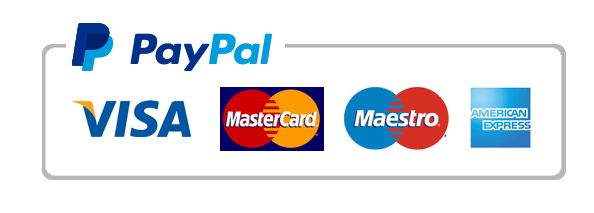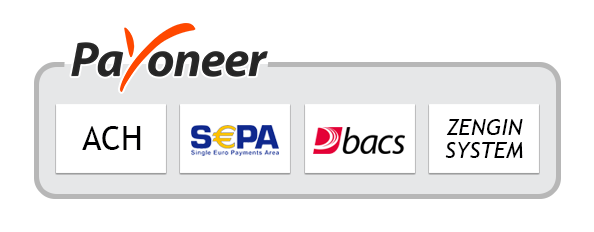Table of Contents
Introduction
New York, NY – March 07, 2025 – The Diethylene Glycol Monoethyl Ether Market is on the rise, expected to jump from USD 479.7 million in 2024 to a robust USD 827.2 million by 2034, growing at a steady CAGR of 5.6% during the forecast period from 2025 to 2034.
This growth is driven by increasing demand across various industries such as paints, coatings, and inks, where it’s prized for its solvent properties. The market is gaining popularity due to its effectiveness in creating smoother, more durable finishes in products. Opportunities are expanding as manufacturers explore its applications in newer, more environmentally friendly formulations, enhancing market appeal.
With the ongoing expansion, stakeholders are increasingly optimistic about investing in this sector, viewing it as a promising area for innovation and long-term returns. This market trajectory highlights not only current industry needs but also points towards future trends and potential markets yet to be fully tapped.

Key Takeaways
- Diethylene Glycol Monoethyl Ether (DEGEE) market is projected to grow from USD 479.7 million in 2024 to USD 827.2 million by 2034, with a CAGR of 5.6% over this period.
- In 2024, DEGEE with greater or equal to 99% purity held a dominant market position with over a 75.3% share due to its wide application and high demand for quality and compliance.
- The Solvent function of DEGEE dominates, with a 53.3% market share in 2024, driven by high performance in industries like automotive and pharmaceuticals.
- Coatings and Inks were significant applications, capturing a 45.4% market share.
- The Asia Pacific region led the market in 2024, with a 41.2% share, attributed to industrial growth, urbanization, and a robust manufacturing base.
➤ For a deeper understanding, click on the sample report link: https://market.us/report/diethylene-glycol-monoethyl-ether-market/request-sample/
Report Scope
| Market Value (2024) | USD 479.7 Million |
| Forecast Revenue (2034) | USD 827.2 Million |
| CAGR (2025-2034) | 5.6% |
| Segments Covered | By Purity (Greater than or Equal to 99% Purity, Less than 99% Purity), By Function (Solvent, Cleaning Agent, Humectant, Defoaming Agent, Others), By Application (Paints, Coatings And Inks, Chemical intermediate, Floor Polish, Pharmaceutical And Personal Care, Others), By End-use (Textile, Architecture and Construction, Chemical, Automotive, Personal Care, Pharmaceutical, Others) |
| Competitive Landscape | Advance Petrochemicals Ltd, Axalta, BASF SE, Clariant AG, Dow Chemical Company, Eastman Chemical Company, ExxonMobil Refining and Supply Co, FBC Chemical Corp., Hannong Chemicals Inc., Huntsman Corporation, LyondellBasell Industries Holdings B.V, Monument Chemical, PKN Orlen SA, Solvay SA, Solventis, Swastik Oil, The Dow Chemical Company, Total SA, Valspar |
➤ Directly purchase a copy of the report – https://market.us/purchase-report/?report_id=140670
Emerging Trends
- Eco-Friendly Products: More companies are making eco-friendly products with Diethylene Glycol Monoethyl Ether because it helps create less pollution. This trend is growing because both customers and governments want safer, greener options.
- Advanced Formulations in Pharmaceuticals: These chemicals are becoming popular in the pharmaceutical industry to help make drugs work better. It’s used in skin creams and other medicines that need to be absorbed deep into the skin.
- Growth in Cosmetics: The cosmetics sector is using more Diethylene Glycol Monoethyl Ether to improve how makeup and skin care products feel and last. Its ability to mix well with other ingredients makes it very valuable.
- Enhanced Cleaning Solutions: There’s a trend toward using this chemical in cleaning products because it helps mix ingredients better and boosts cleaning power. This is especially important for products that are used in tough cleaning jobs.
- Innovation in Paints and Coatings: Companies are creating new kinds of paints and coatings that are easier to use and last longer, thanks to Diethylene Glycol Monoethyl Ether. This innovation is making it easier for people to get professional results without professional help.
Use Cases
- Paints and Coatings: Diethylene Glycol Monoethyl Ether is often used in paints and coatings because it helps them dry evenly and improves their application properties. This makes it ideal for both household and industrial painting projects.
- Cleaning Products: It’s an effective ingredient in cleaning products, enhancing their ability to dissolve oils and greases, making them perfect for tough cleaning tasks in kitchens and garages.
- Cosmetic Products: In cosmetics, this chemical is used to enhance the texture and stability of products like lotions and creams, ensuring they are smooth and easily absorbed by the skin.
- Pharmaceuticals: Diethylene Glycol Monoethyl Ether is valuable in pharmaceuticals for its ability to help medications penetrate the skin and other tissues, making topical drugs more effective.
- Ink Production: It is used in the production of inks for its solvent properties, ensuring smooth and consistent printing on various surfaces, essential for high-quality printing tasks.
Major Challenges
- Regulatory Restrictions: Diethylene Glycol Monoethyl Ether faces strict regulations due to its chemical properties, which can limit its use in some products. Companies need to navigate these rules carefully to avoid penalties and ensure product safety.
- Environmental Concerns: There are environmental concerns related to the use and disposal of this chemical. It requires proper handling to prevent pollution, which can increase operational costs and complexity for businesses.
- Health Risks: Exposure to Diethylene Glycol Monoethyl Ether can pose health risks such as irritation or more severe effects depending on the level and type of exposure. Companies need to implement strict safety measures to protect workers and consumers.
- Supply Chain Volatility: Fluctuations in the supply of Diethylene Glycol Monoethyl Ether can affect production schedules and costs. Dependency on limited suppliers can pose a significant risk to businesses relying on this chemical.
- Competition from Alternatives: The development of safer or more environmentally friendly alternatives could reduce demand for Diethylene Glycol Monoethyl Ether. Keeping up with innovations and consumer preferences is crucial for companies in this market.
Market Growth Opportunities
- Expansion into Emerging Markets: As developing regions continue to grow industrially, there is a significant opportunity to expand the market for Diethylene Glycol Monoethyl Ether, particularly in the paint and coatings sector. Tailoring products to meet these markets’ specific needs can drive growth.
- Innovative Product Formulations: There’s a chance to innovate by integrating Diethylene Glycol Monoethyl Ether into new product formulations that are safer and more effective, appealing to a broader range of industries, including pharmaceuticals and personal care.
- Green Chemistry Initiatives: Developing eco-friendly alternatives that incorporate Diethylene Glycol Monoethyl Ether can open up opportunities in markets that are shifting towards sustainable practices. This approach could attract environmentally conscious consumers and comply with tightening regulations.
- Partnerships with Other Industries: Forming strategic partnerships with companies in the cosmetics and cleaning industries could unlock new applications for Diethylene Glycol Monoethyl Ether, boosting its market penetration and usage diversity.
- Technological Advancements in Manufacturing: Investing in advanced manufacturing technologies to produce Diethylene Glycol Monoethyl Ether more efficiently can reduce costs and improve product quality, creating competitive advantages in the market.
Recent Developments
1. Advance Petrochemicals Ltd
- Innovations: Advance Petrochemicals has been focusing on expanding its production capacity for glycol ethers, including DEGME, to meet growing demand in the paints, coatings, and cleaning industries. They have invested in advanced purification technologies to improve the quality of DEGME.
- Partnerships: The company has partnered with local distributors in emerging markets to strengthen its supply chain for glycol ethers.
- Contribution to DEGME Sector: Their focus on high-purity DEGME has made it a preferred supplier for specialty chemical manufacturers.
2. Axalta
- Innovations: Axalta has been developing eco-friendly coating solutions that incorporate DEGME as a solvent. Their recent innovations focus on reducing VOC emissions while maintaining performance.
- Partnerships: Axalta collaborated with raw material suppliers to ensure a sustainable supply chain for glycol ethers, including DEGME.
- Contribution to DEGME Sector: Their use of DEGME in low-VOC coatings has driven demand for high-quality glycol ethers.
3. BASF SE
- Innovations: BASF has introduced new formulations of DEGME for use in industrial cleaning agents and coatings. They have also developed bio-based alternatives to traditional glycol ethers.
- Acquisitions: BASF acquired a specialty chemicals company to strengthen its portfolio in solvents and glycol ethers.
- Partnerships: BASF partnered with automotive manufacturers to develop DEGME-based solutions for electric vehicle battery cooling systems.
- Contribution to DEGME Sector: BASF’s innovations have expanded the application of DEGME in high-growth industries like EVs and renewable energy.
4. Clariant AG
- Innovations: Clariant has been working on sustainable production methods for DEGME, focusing on reducing carbon emissions during manufacturing.
- Partnerships: Clariant partnered with academic institutions to research new applications of DEGME in pharmaceuticals and agrochemicals.
- Contribution to DEGME Sector: Their focus on sustainability has positioned DEGME as a greener solvent option.
5. Dow Chemical Company
- Innovations: Dow has developed a new line of DEGME-based solvents for use in water-based coatings and adhesives. They have also introduced recycling technologies for glycol ethers.
- Acquisitions: Dow acquired a smaller chemical company to enhance its glycol ether production capabilities.
- Partnerships: Dow partnered with government agencies to promote the use of DEGME in environmentally friendly industrial applications.
Conclusion
The Diethylene Glycol Monoethyl Ether Market presents a promising outlook with its significant growth potential driven by expanding applications across various industries. While it faces challenges such as regulatory hurdles and health concerns, the opportunities for innovation and market expansion into emerging regions are abundant. By focusing on eco-friendly formulations and strategic industry partnerships, companies can leverage these opportunities to not only enhance their market position but also contribute to sustainable industry practices.
Discuss Your Needs With Our Analyst
Please share your requirements with more details so our analyst can check if they can solve your problem(s)





